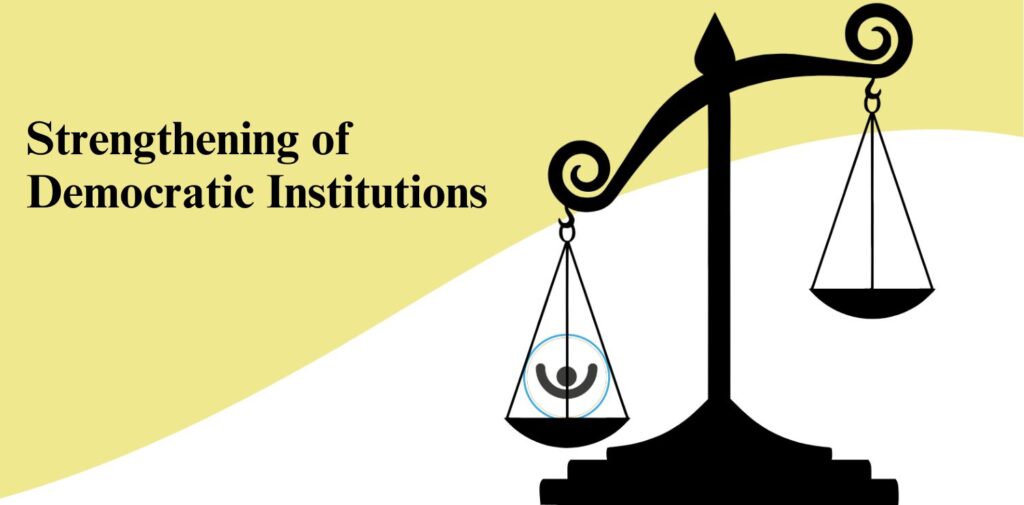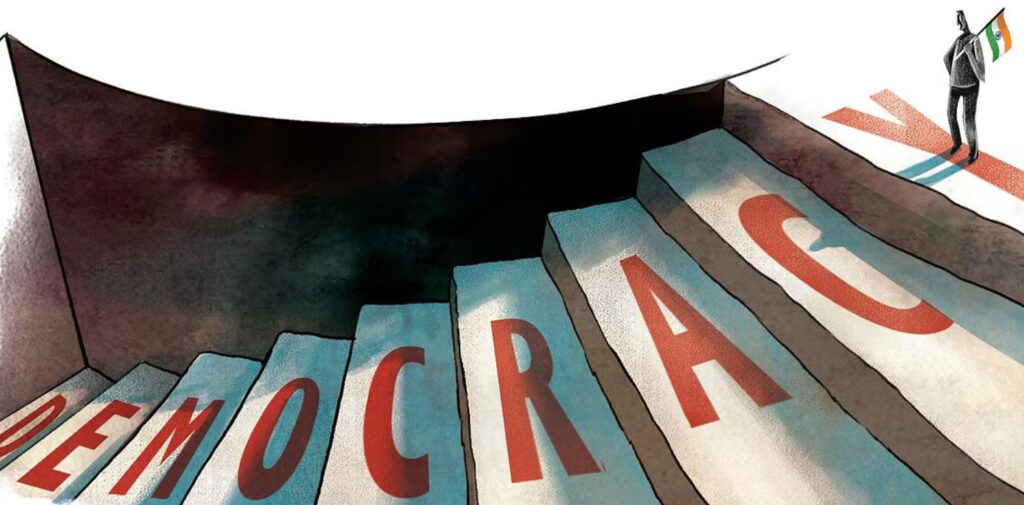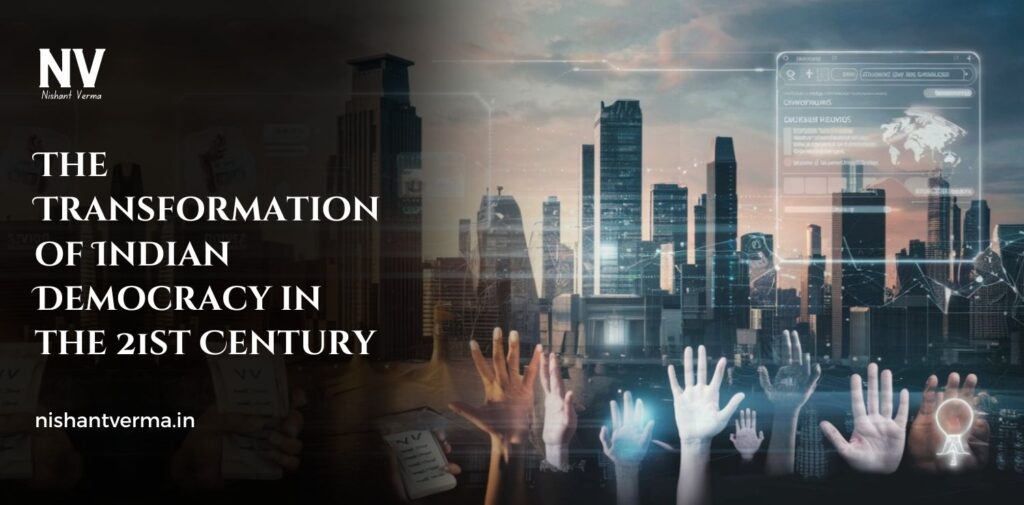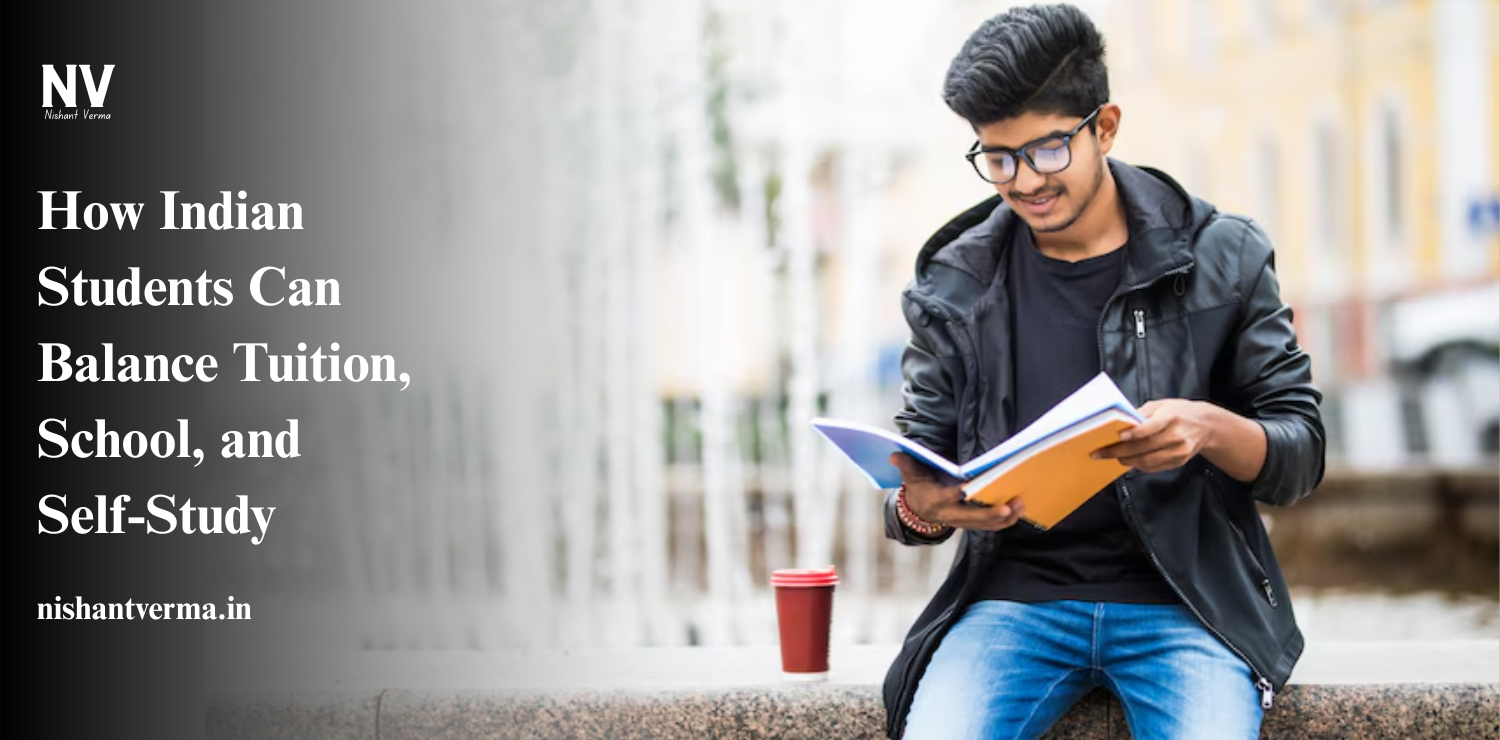India, the world’s largest democracy, has undergone significant transformations since its independence in 1947. However, the 21st century has marked a particularly pivotal period in the country’s democratic journey. With rapid technological advancements, changing political dynamics, shifting societal trends, and global influences, Indian democracy has evolved in ways that were unimaginable just a few decades ago. This article will explore how Indian democracy has transformed in the 21st century, focusing on political participation, social change, governance, and the challenges it faces.
The Rise of Digital Democracy
One of the most striking changes in Indian democracy in the 21st century has been the growth of digital platforms that facilitate greater political participation and engagement. With the advent of the internet and smartphones, millions of Indians now have the power to express their opinions, access political information, and engage in debates online.
Social media platforms like Facebook, Twitter, Instagram, and WhatsApp have become central to political communication. Political parties and leaders now use these platforms to reach voters, spread their messages, and even conduct campaigns. In fact, during the last few national elections, social media played a key role in shaping public opinion and engaging young voters who had previously been less politically active.
The use of digital technology in governance has also improved transparency and accountability. Government services are now more accessible online, making it easier for citizens to access information and interact with the administration. Initiatives like Digital India have helped bridge the gap between rural and urban populations, ensuring that more people are included in the democratic process.

The Changing Political Landscape
The political landscape in India has undergone dramatic shifts since the beginning of the 21st century. The period has seen the rise of new political parties, alliances, and movements that have changed the way politics is conducted in the country.
The 2000s saw the emergence of the Bharatiya Janata Party (BJP) as a dominant force in Indian politics, particularly after the election of Narendra Modi as the Prime Minister in 2014. The BJP’s rise marked the end of Congress dominance in Indian politics, which had ruled for much of the post-independence period. Under Modi’s leadership, the BJP embraced a more nationalistic and pro-business agenda, which resonated with a large segment of the Indian population.
At the same time, regional parties have gained influence, particularly in states like Uttar Pradesh, West Bengal, Tamil Nadu, and Bihar. These regional forces have become important players in national politics, with their leaders representing the aspirations of local communities and advocating for greater autonomy.
The changing political landscape has also led to a rise in voter awareness and political participation. Political parties now actively engage with voters through digital campaigns, rallies, and social media. Election results, especially in state elections, have become increasingly unpredictable, signaling a more dynamic and competitive political environment.
Greater Inclusivity and Political Awareness
One of the most significant transformations in Indian democracy has been the increased political awareness and participation of diverse social groups. Over the past two decades, there has been a significant rise in the participation of women, youth, and marginalized communities in the political process.
The youth, in particular, have become more politically engaged, largely due to the power of social media and the internet. Young Indians are now more aware of political issues, and many are actively involved in grassroots movements, protests, and campaigns. The 2011 Anna Hazare-led anti-corruption movement, for example, was largely driven by young people, who used social media to mobilize support and demand action from the government.
Women’s political participation has also increased in the 21st century, both as voters and as candidates. Although women still face barriers to full participation, such as societal norms and political discrimination, there has been progress in recent years. More women are entering politics at the local, state, and national levels, and their contributions to policy discussions and decision-making are growing.
Moreover, the 21st century has witnessed greater inclusivity of marginalized communities such as Dalits, Adivasis, and backward castes in Indian politics. Political parties now make more concerted efforts to address the needs and concerns of these communities, and affirmative action policies have been expanded to improve their representation.

Strengthening of Democratic Institutions
Indian democracy has also seen the strengthening of its democratic institutions over the past two decades. Institutions like the Election Commission of India, the judiciary, and the media have all played an important role in maintaining the integrity of India’s democracy.
The Election Commission of India has consistently delivered free and fair elections, becoming one of the most trusted institutions in the country. The advent of technology has further helped streamline the election process, with electronic voting machines (EVMs) and voter verifiable paper audit trails (VVPATs) making elections more transparent and less prone to fraud.
India’s judiciary, despite facing challenges such as case backlogs and delays, remains a critical safeguard for democracy. Landmark judgments have upheld the rights of citizens, advanced social justice, and ensured the proper functioning of the democratic system. The judiciary’s ability to act independently has strengthened India’s democratic framework.
The media in India, both traditional and digital, has also become a more powerful force in shaping public opinion and holding the government accountable. Although there are concerns about media bias and freedom of the press, the presence of independent media outlets has ensured that citizens remain informed and that the government is held accountable for its actions.
Social Movements and the Voice of the People
In the 21st century, India has witnessed the rise of several powerful social movements that have influenced the political discourse and led to significant policy changes. These movements have been instrumental in raising awareness about key issues such as corruption, women’s rights, environmental conservation, and the rights of marginalized communities.
The anti-corruption movement in 2011, led by social activist Anna Hazare, was one of the most significant social movements of the 21st century. It brought millions of Indians to the streets, demanding stronger anti-corruption laws and greater accountability from the government. The movement eventually led to the creation of the Lokpal (Ombudsman) institution, though its effectiveness has been debated.
Another notable movement was the 2012 Delhi gang rape protests, which sparked nationwide outrage and demands for better laws to protect women from sexual violence. These protests led to stronger laws on sexual assault, greater public awareness about gender violence, and increased political pressure to address women’s safety issues.
Social media has played a crucial role in these movements, allowing activists to reach a wider audience, mobilize support, and organize protests quickly. The rise of online petitions, hashtags, and social media campaigns has made it easier for citizens to voice their concerns and push for political change.

Challenges Faced by Indian Democracy
Despite the progress made in the 21st century, Indian democracy still faces several challenges that need to be addressed for it to continue evolving successfully. One of the major challenges is the rise of political polarization. The growing divide between different political ideologies has created a more fragmented and confrontational political environment. This polarization has made it difficult to foster consensus on key national issues and has led to increased tensions between various social and religious groups.
Another challenge is the persistence of corruption at various levels of government. While the anti-corruption movement raised awareness, corruption remains a significant issue, particularly in local administration and government contracts. Transparency and accountability measures need to be strengthened to address this problem effectively.
Economic inequality and regional disparities also continue to be major challenges. While India has made impressive strides in economic growth, many people still live in poverty, particularly in rural areas. Ensuring that the benefits of economic growth reach all sections of society remains a key priority for Indian democracy.
Conclusion: A Bright Future for Indian Democracy
India’s democracy has undergone profound transformations in the 21st century, from the rise of digital platforms to greater inclusivity and participation from diverse social groups. The strengthening of democratic institutions, the power of social movements, and the increasing political awareness of citizens all contribute to India’s evolving political landscape.
However, challenges such as political polarization, corruption, and economic inequality remain. For Indian democracy to thrive in the future, it will need to address these issues while continuing to adapt to the changing needs of its citizens. With the resilience of its institutions and the active engagement of its people, India’s democracy is well-positioned to face the challenges of the 21st century and continue to flourish in the years to come.




